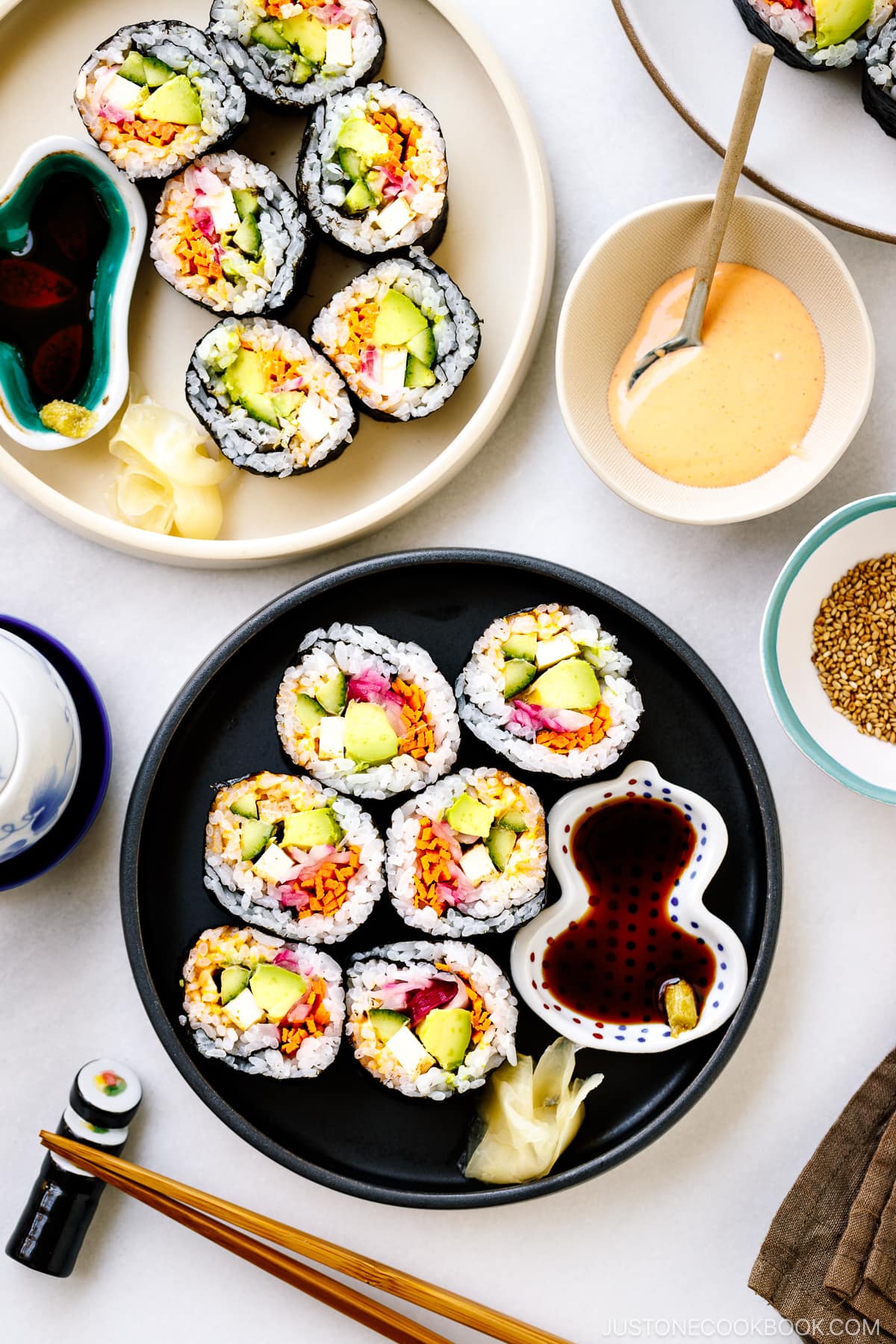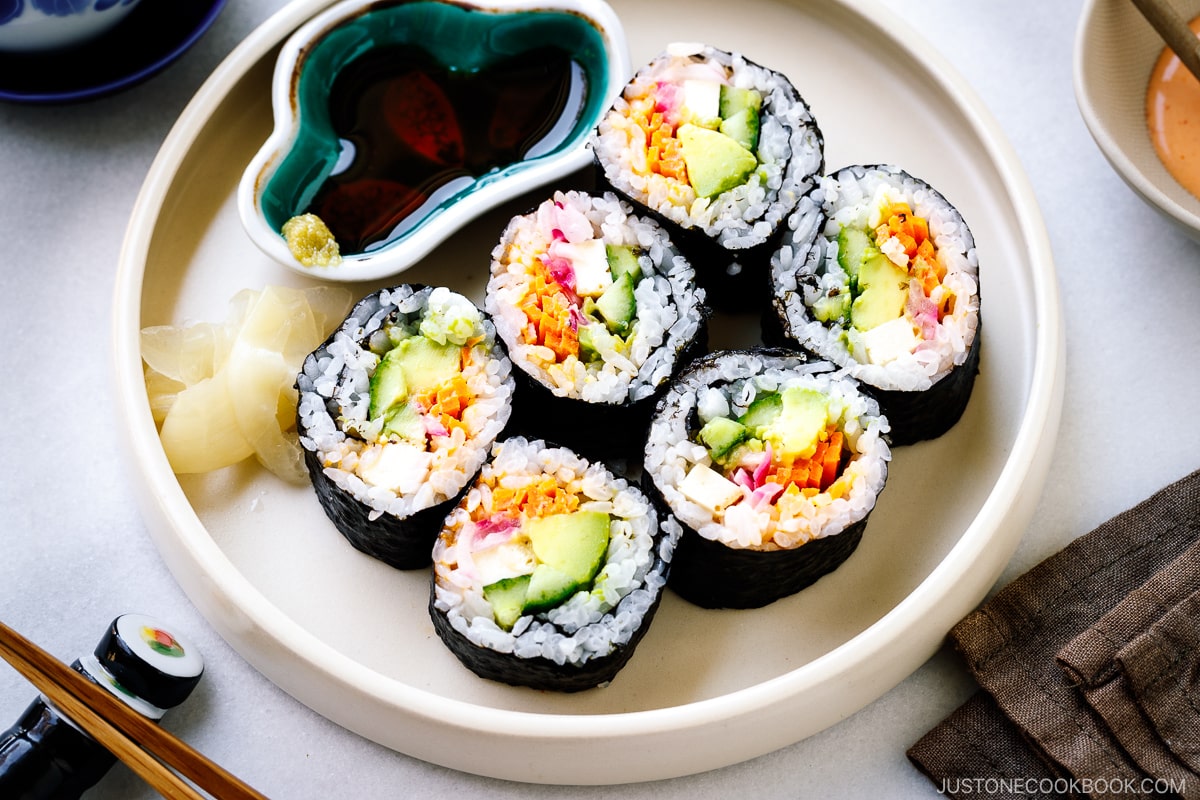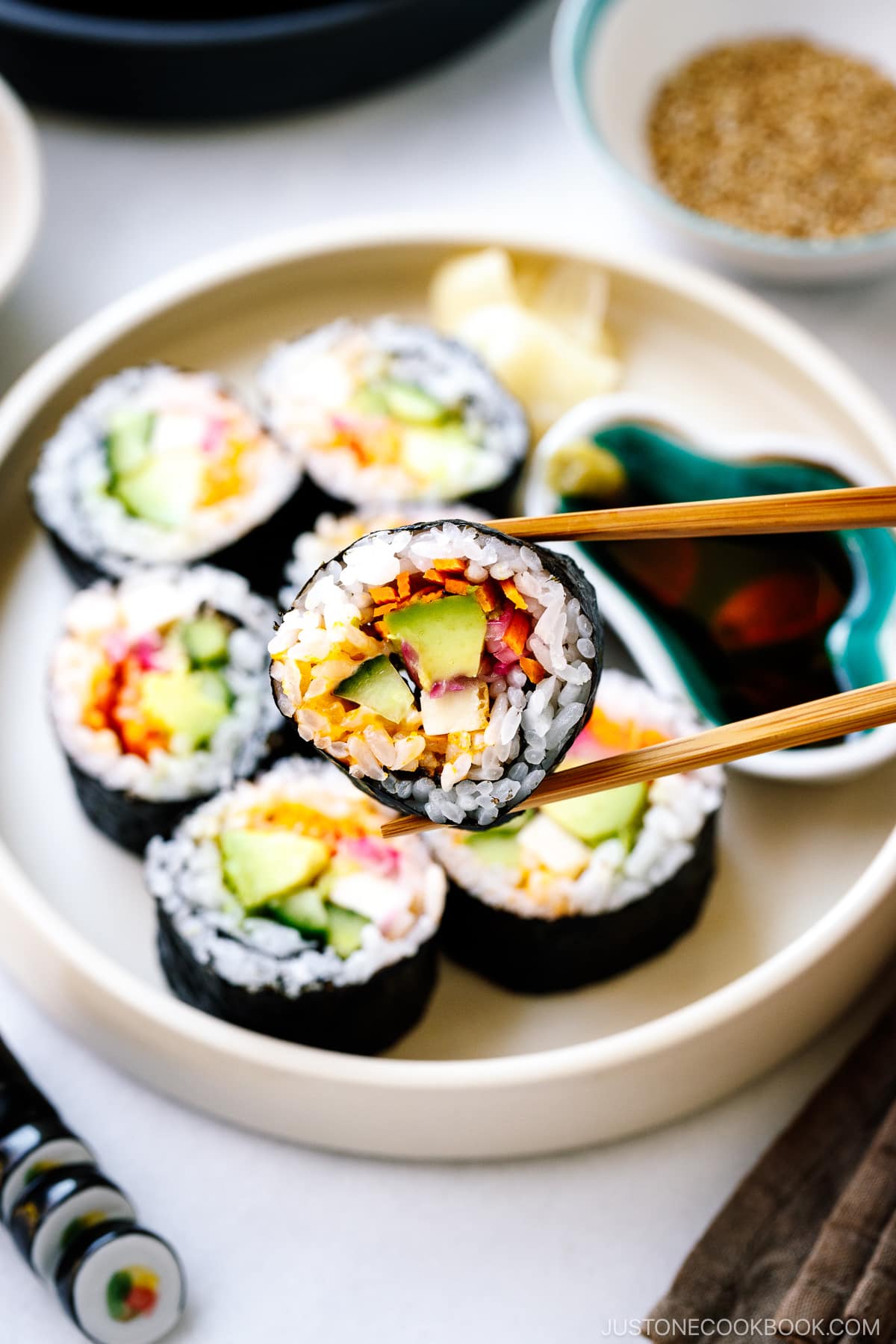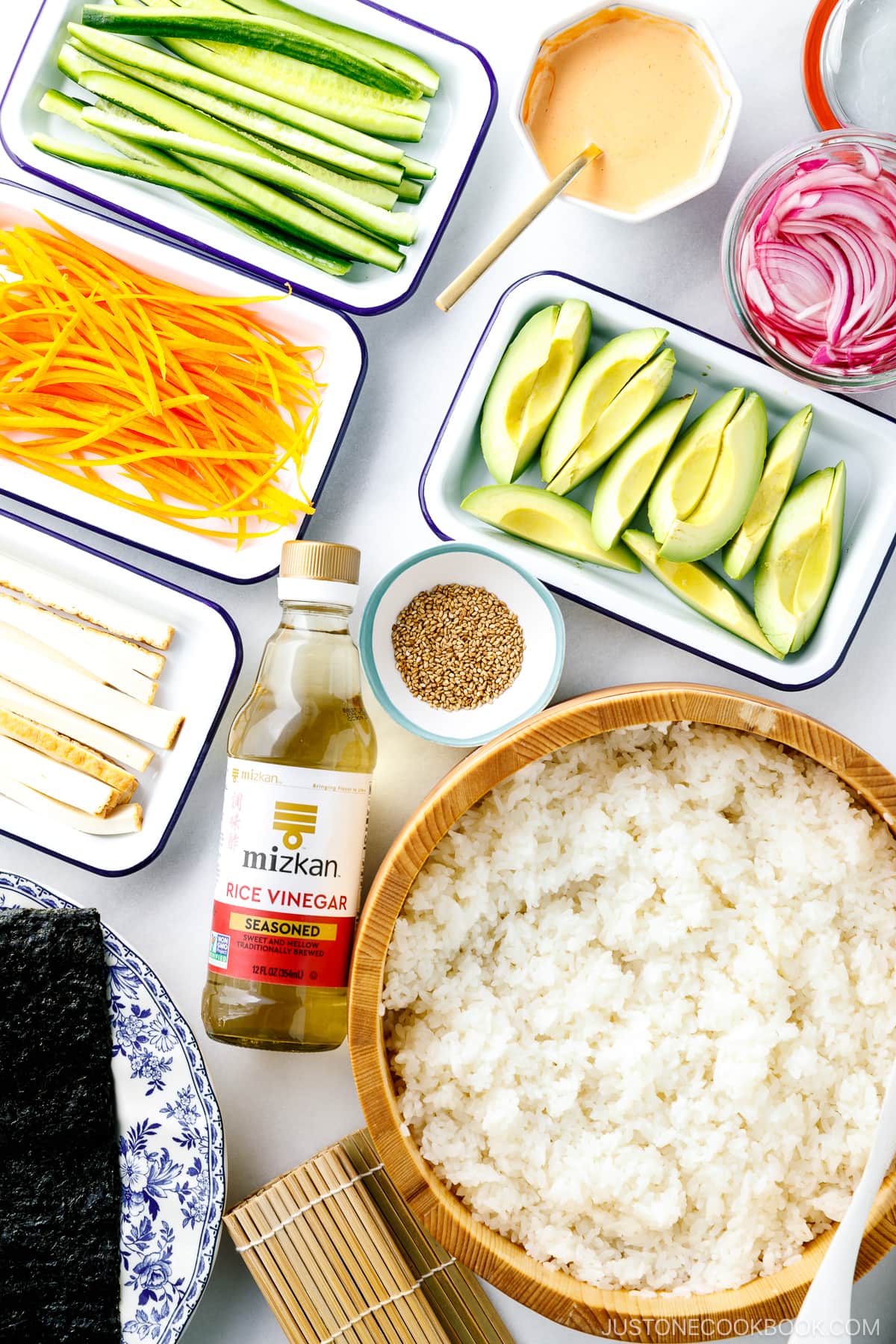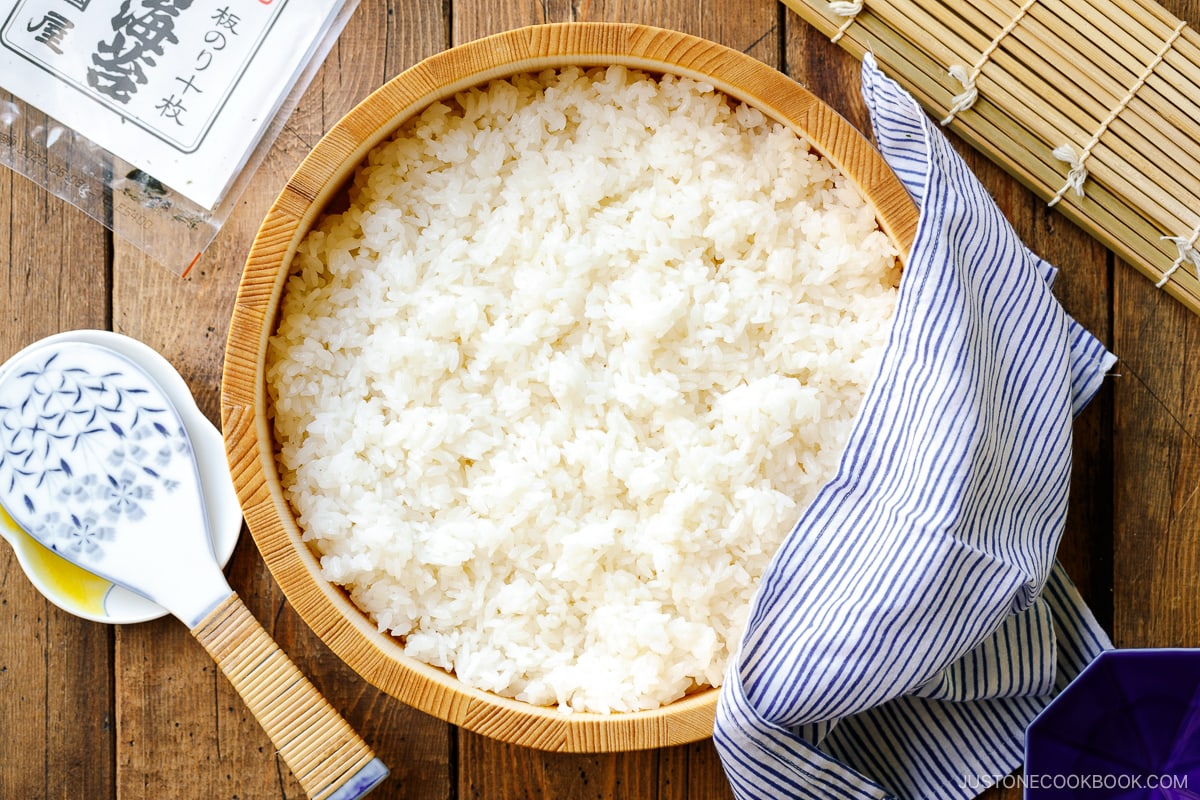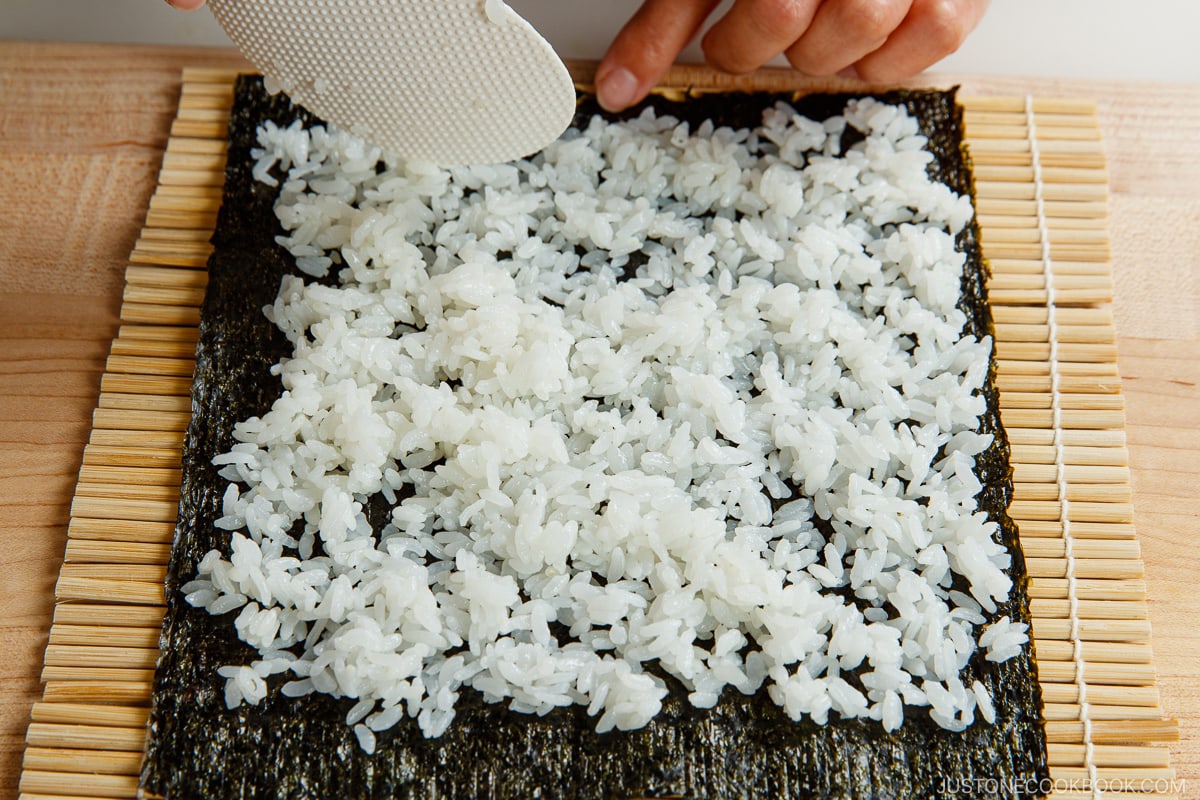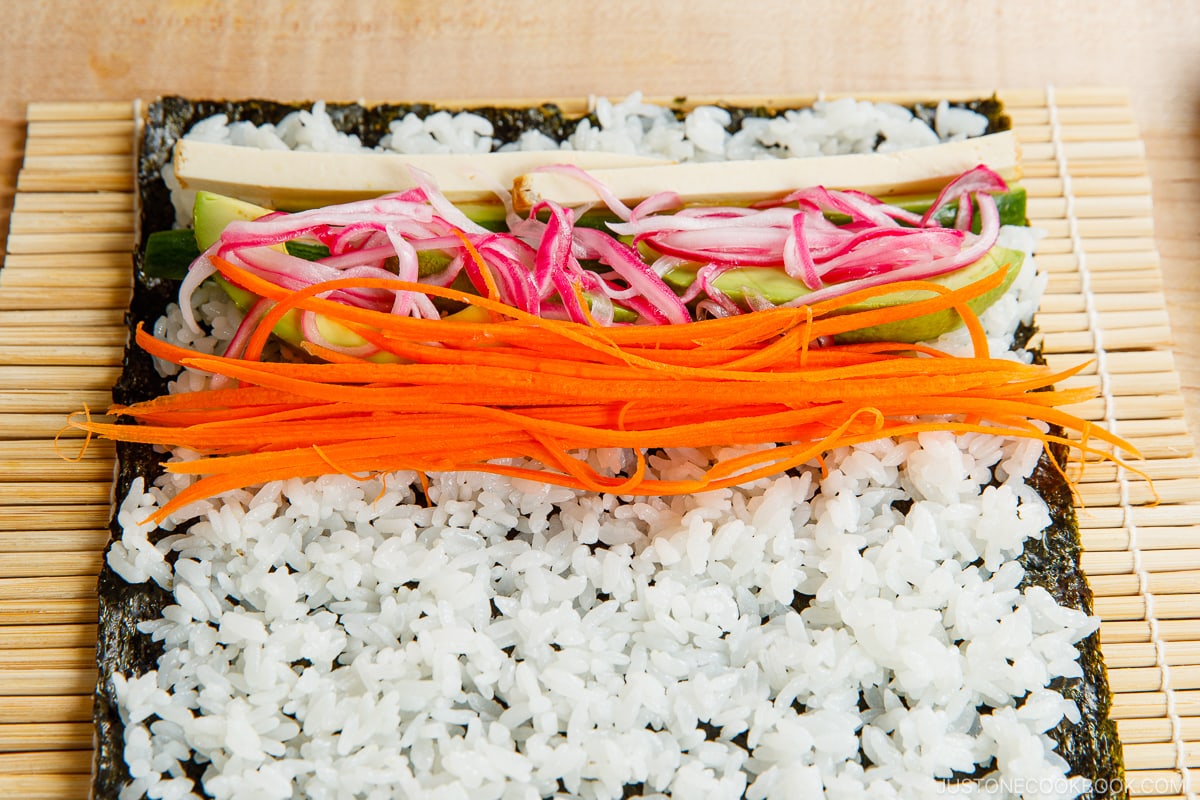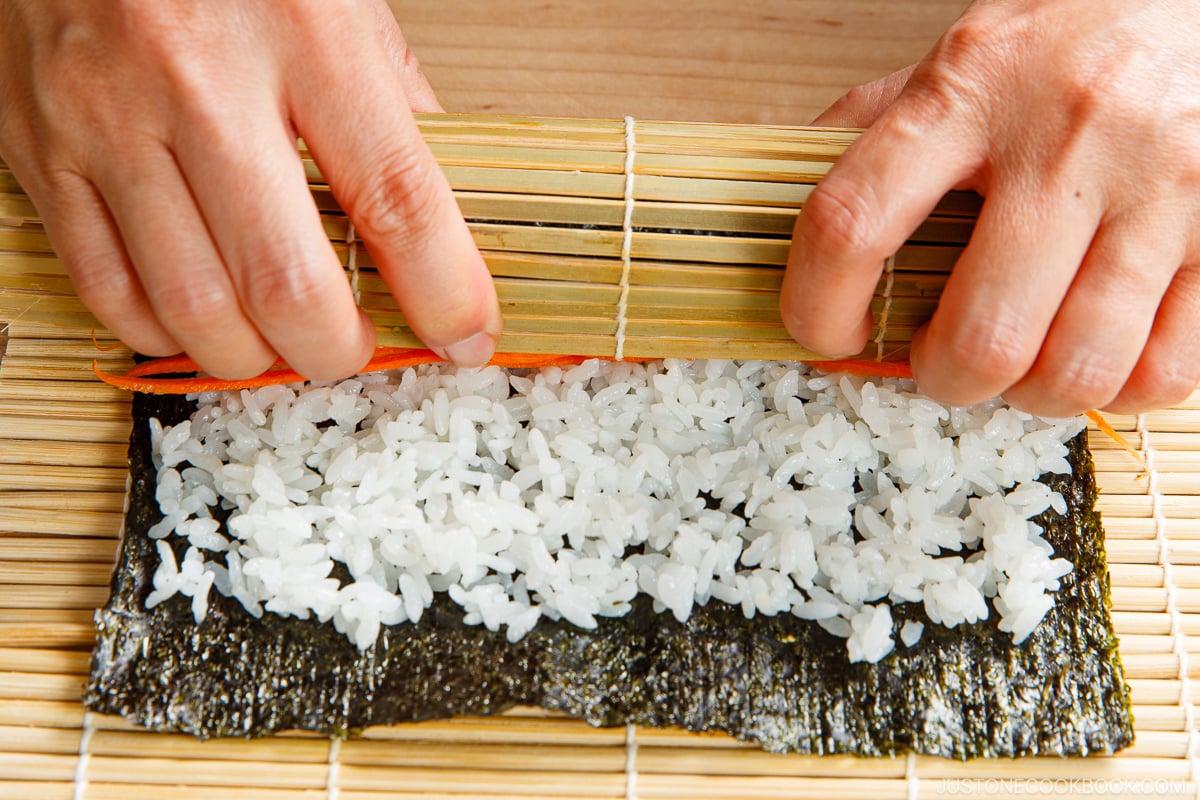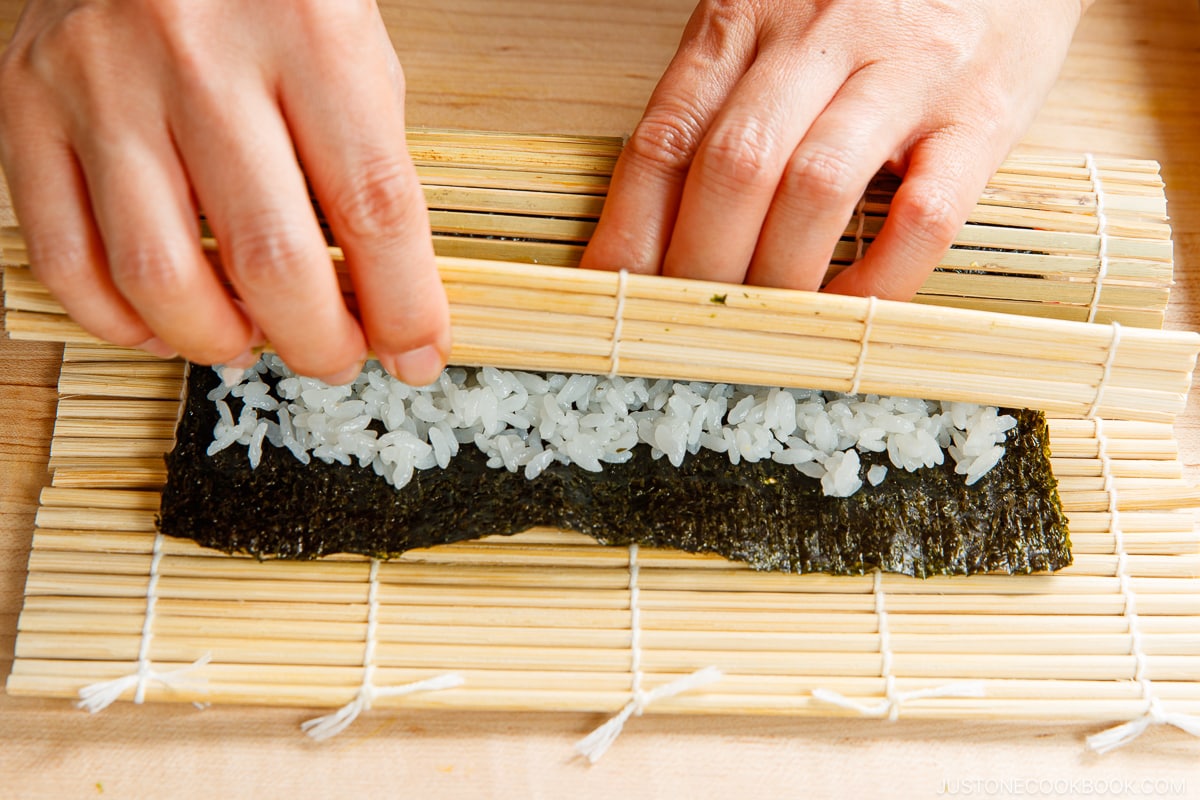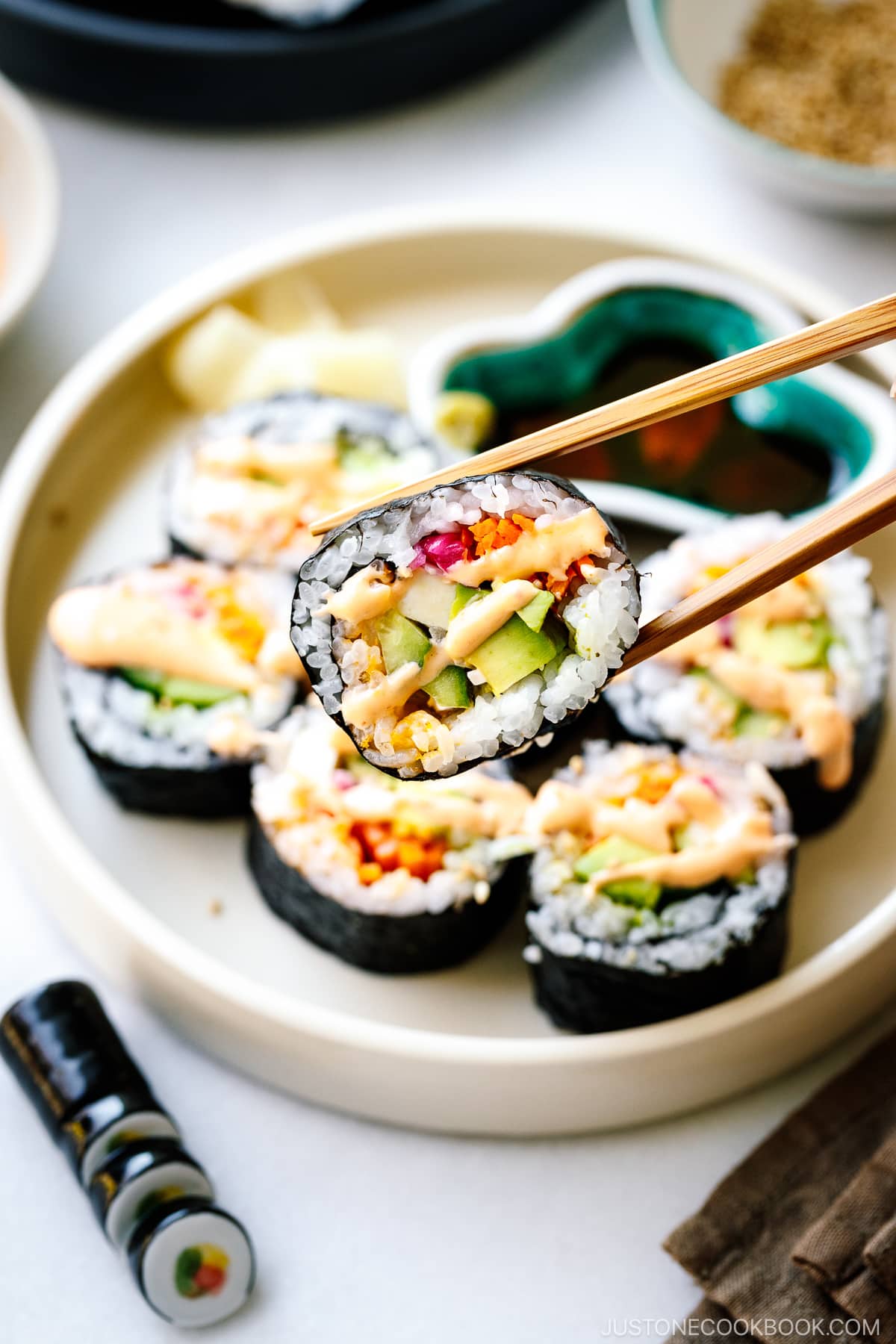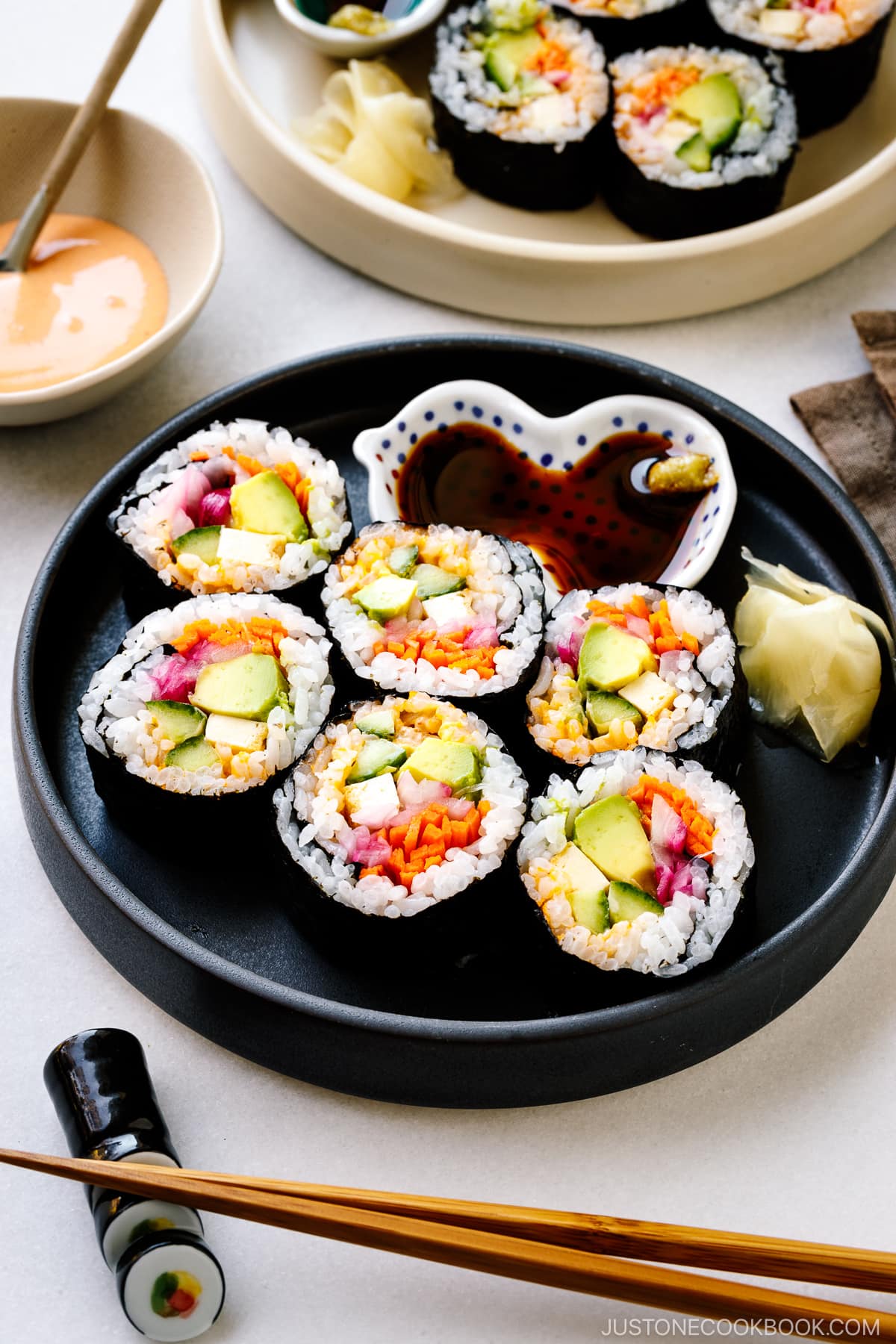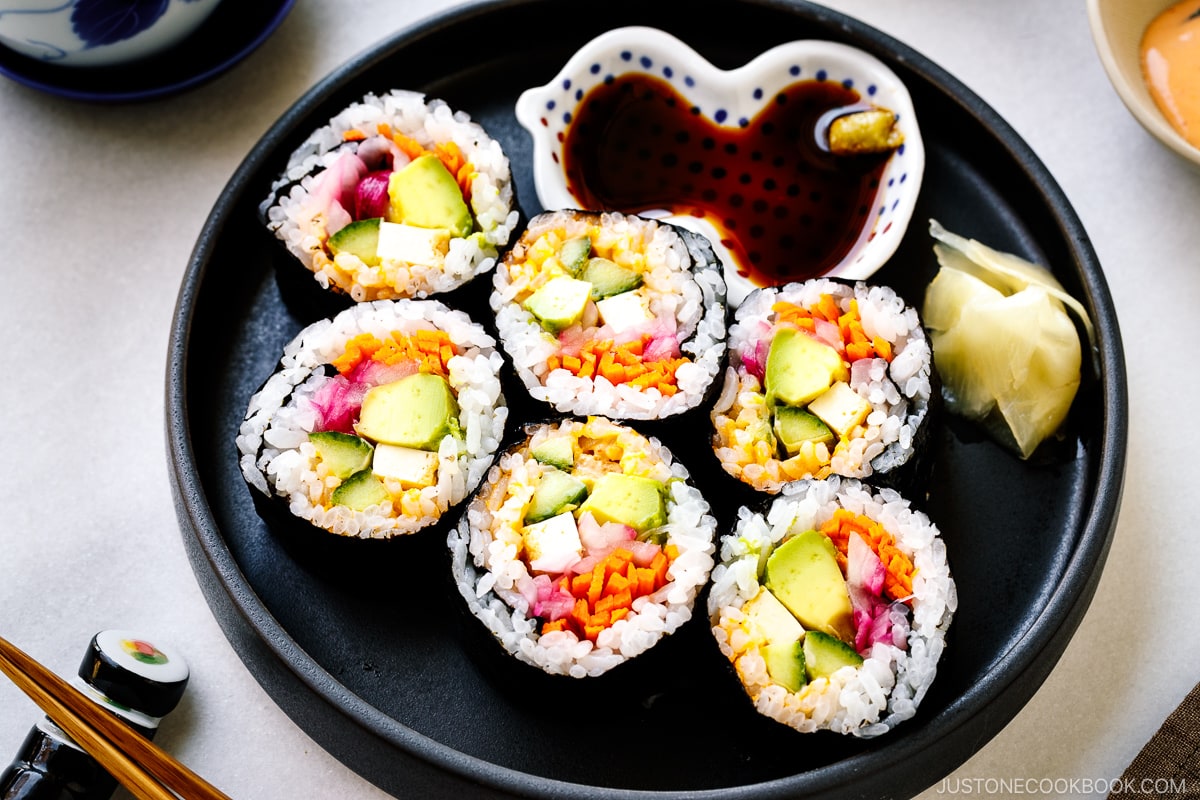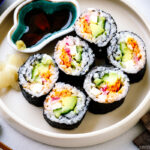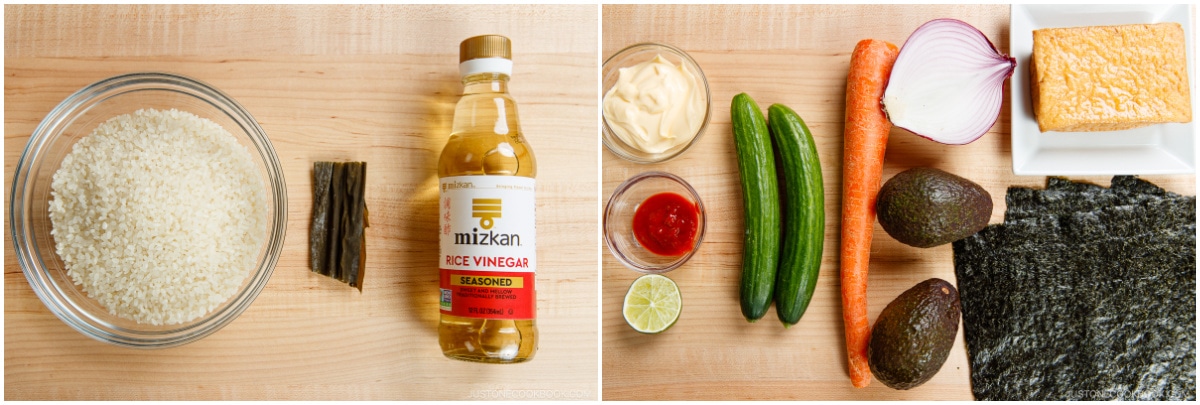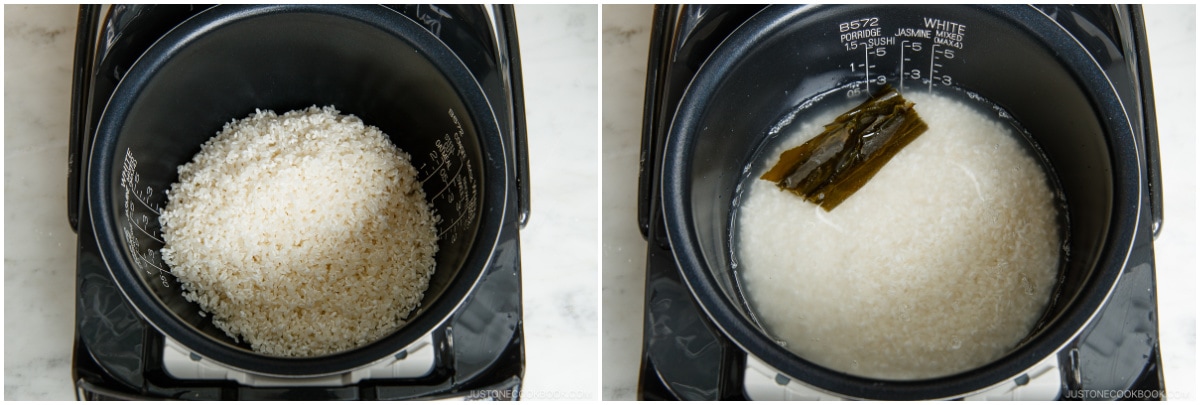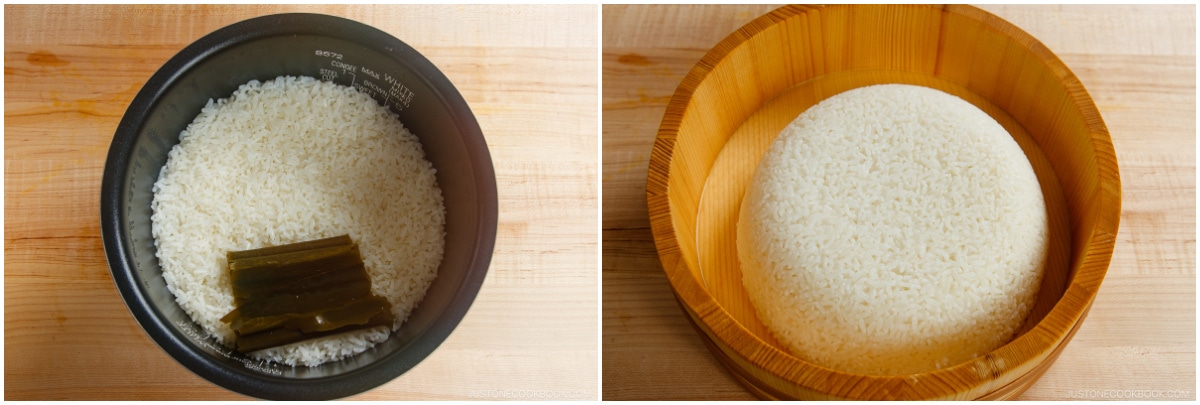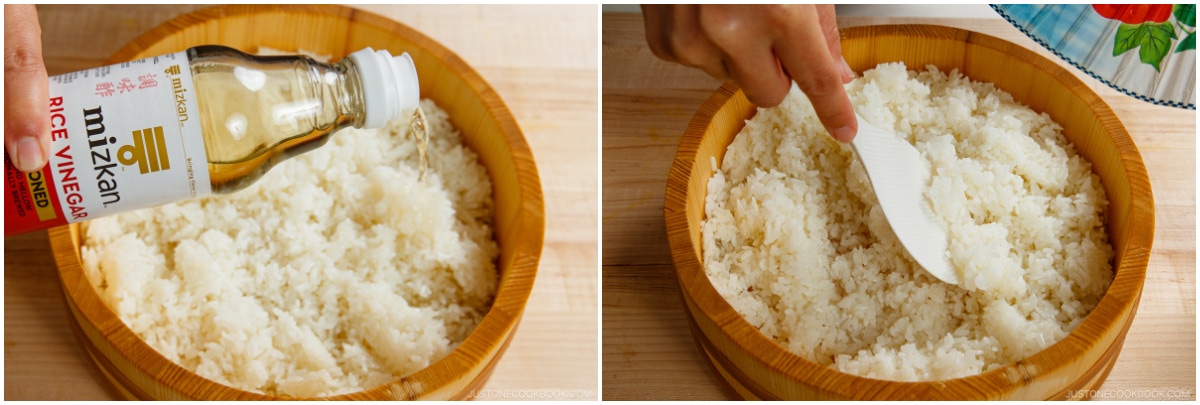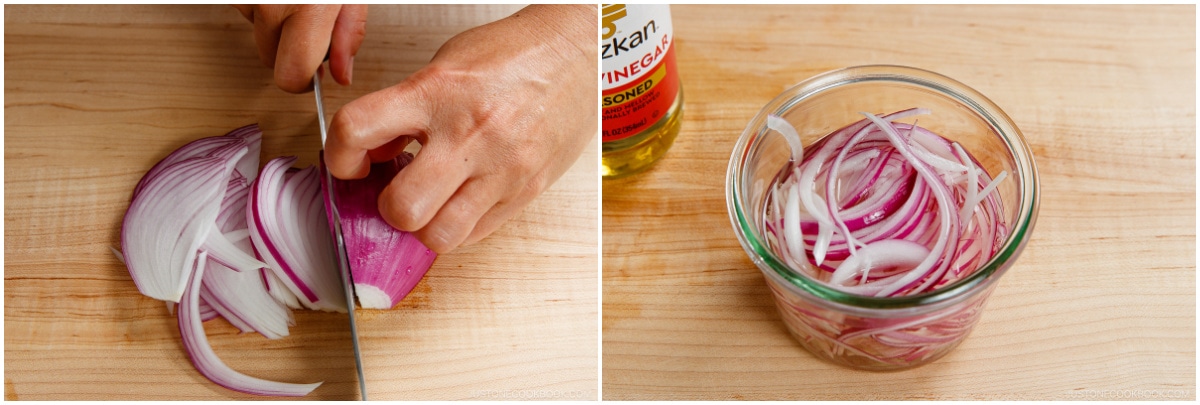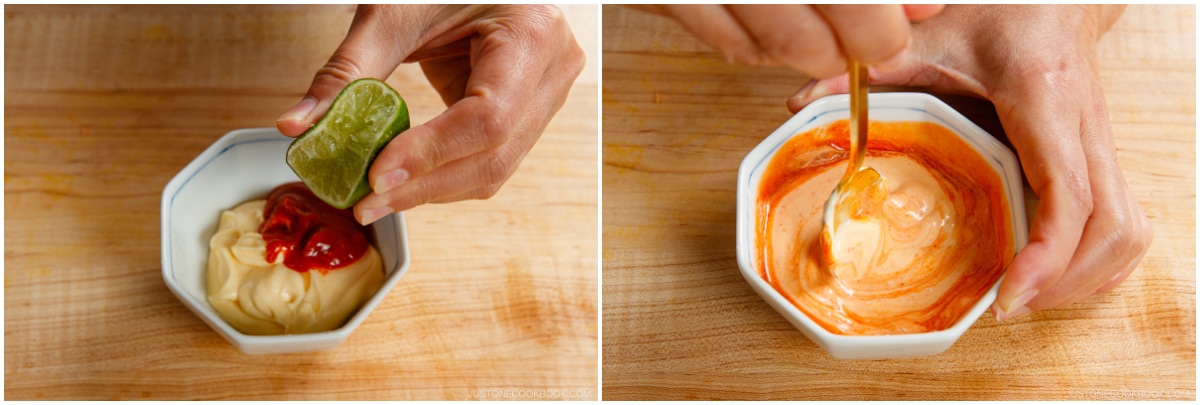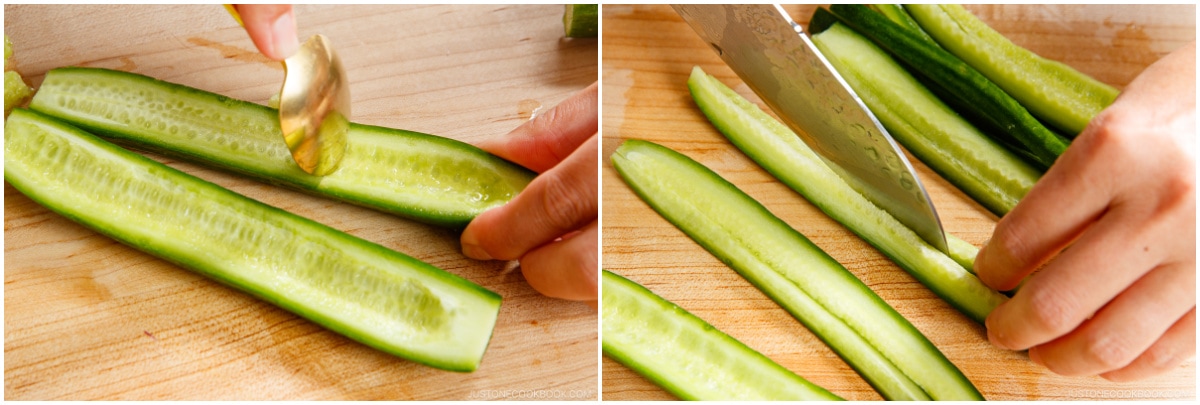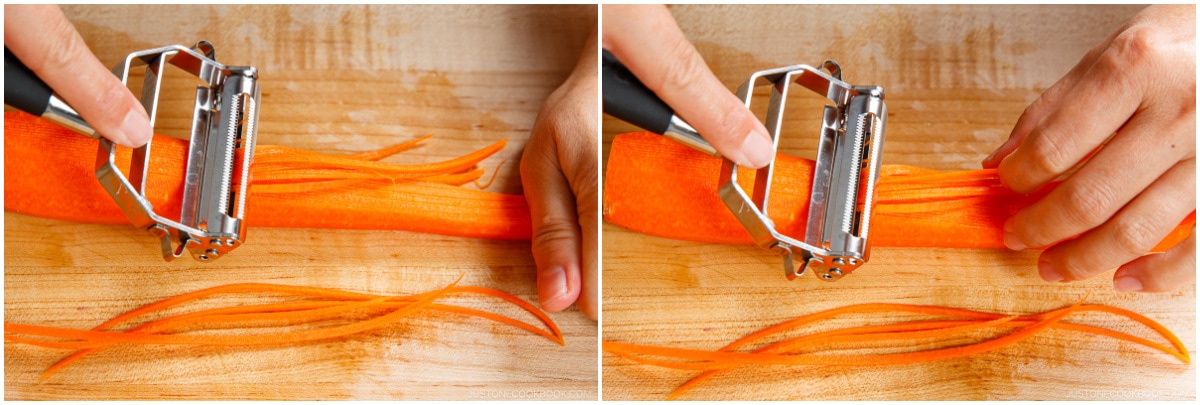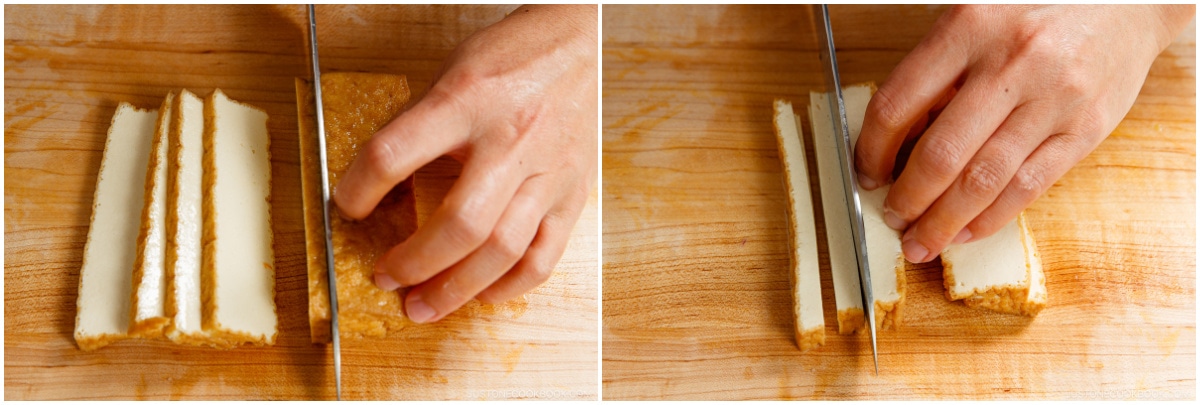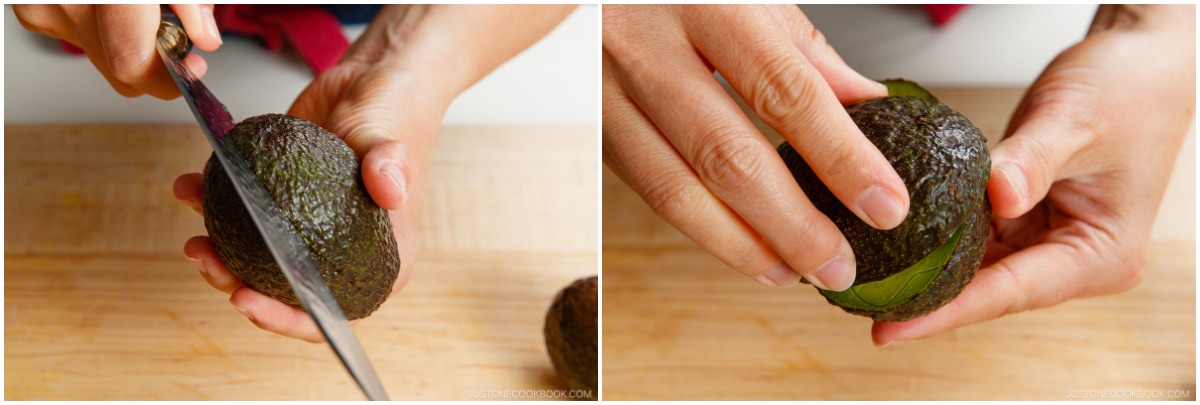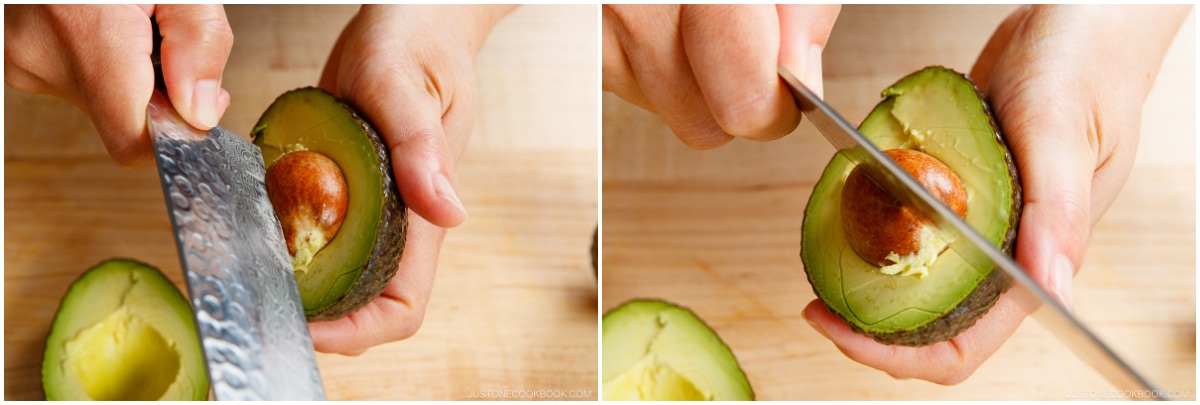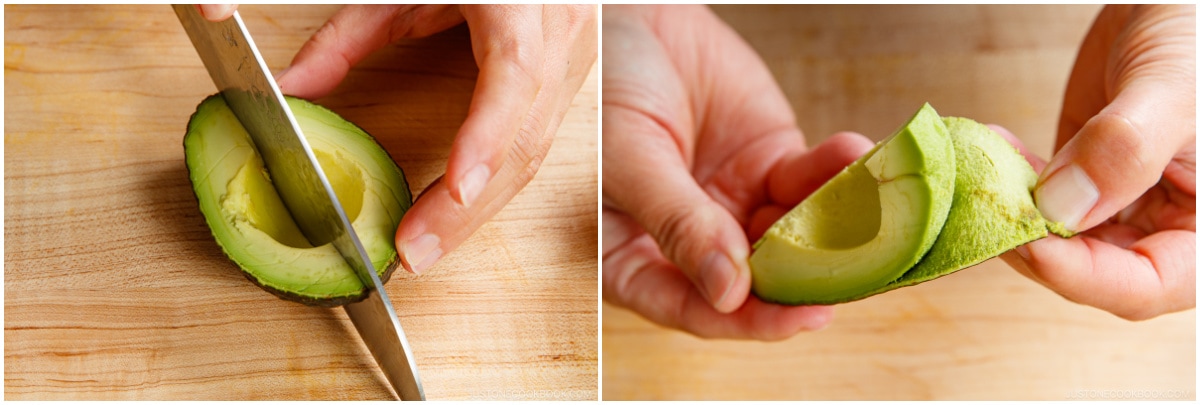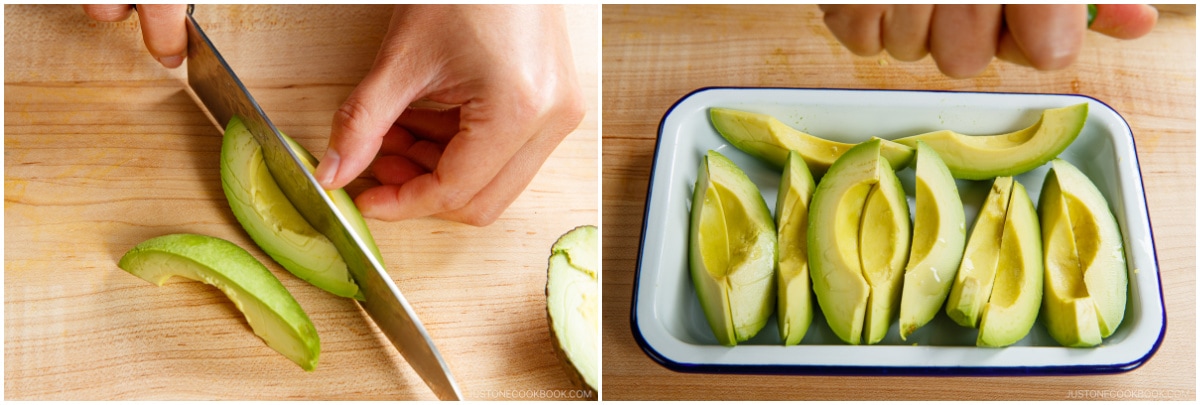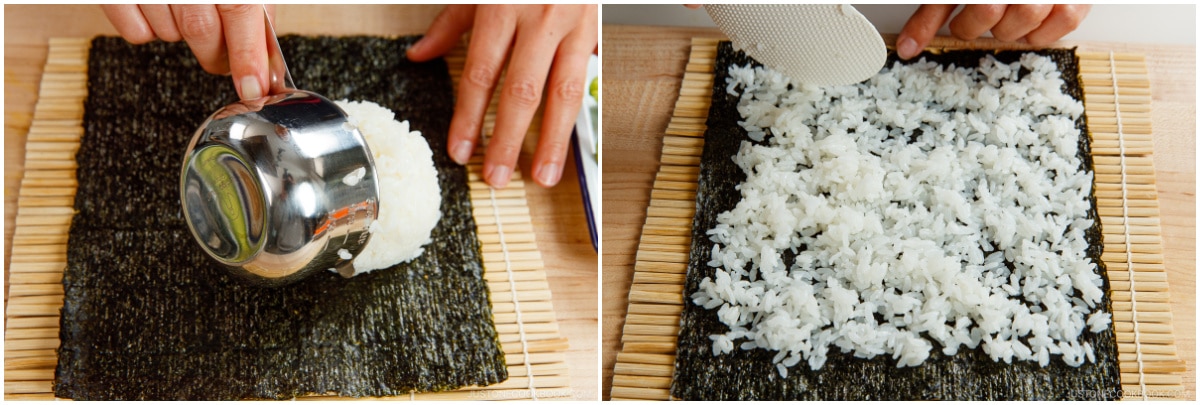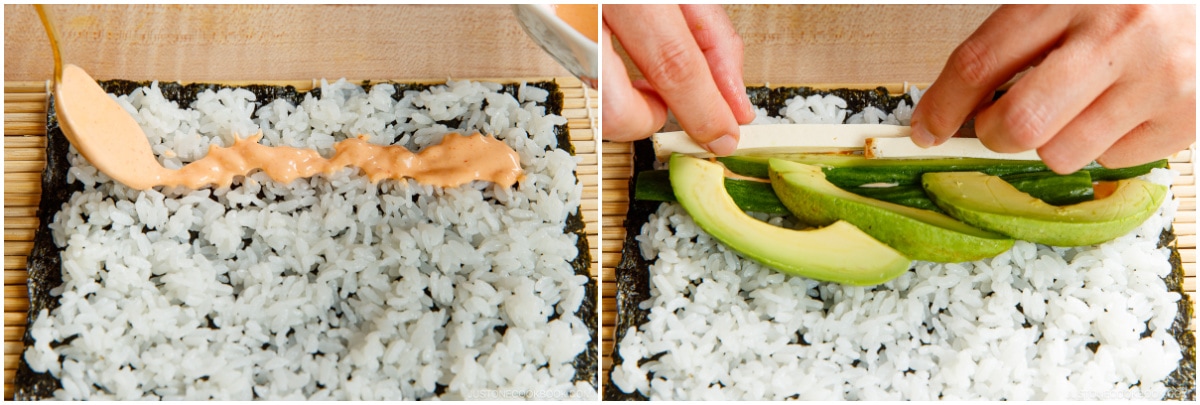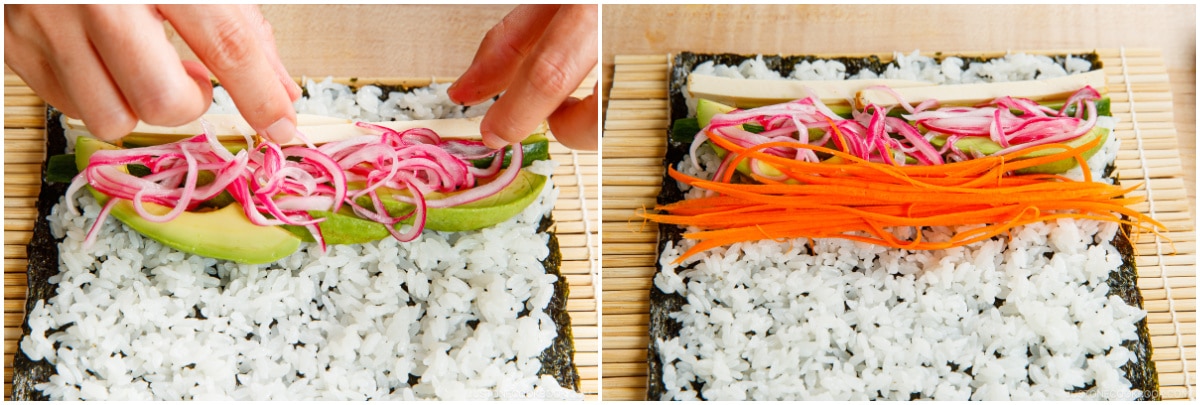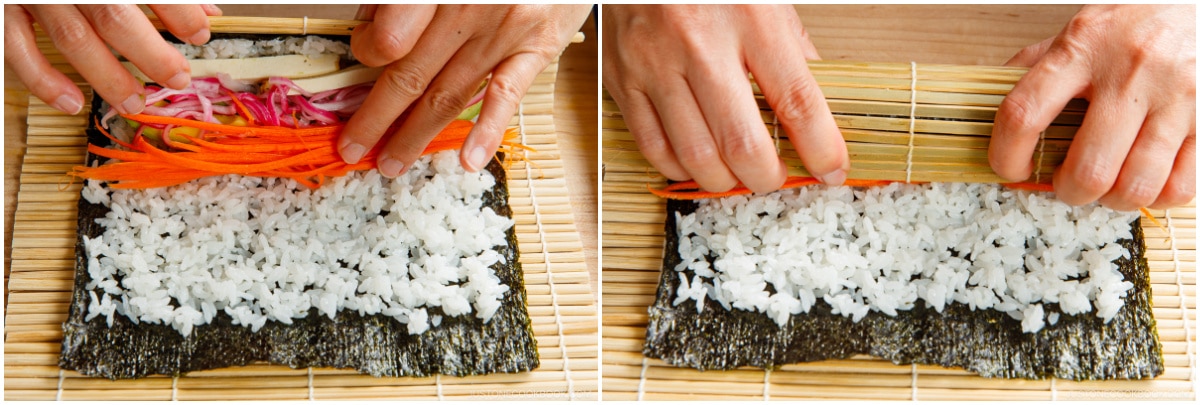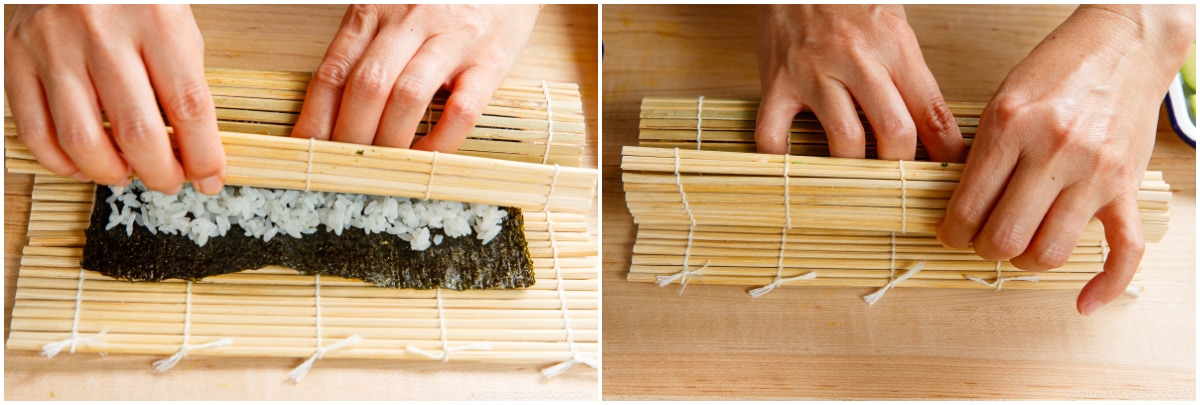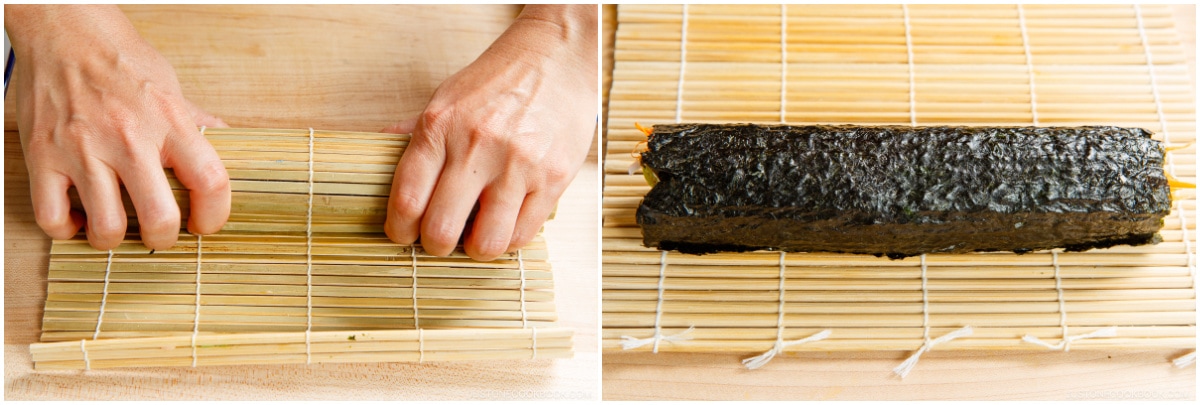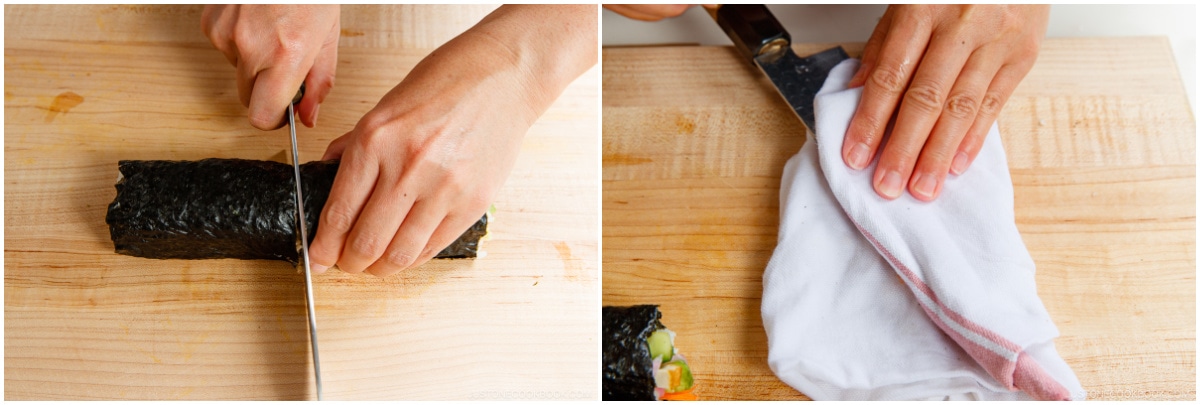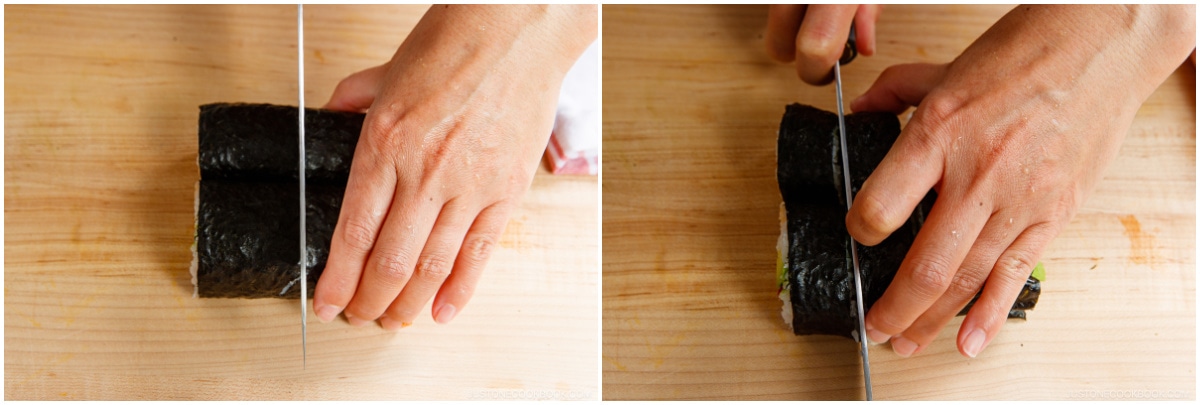I’ve shared quite a collection of sushi on Just One Cookbook, but today I’m going to show you how to make vegetarian sushi rolls at home. Light, tasty, and colorful, these sushi rolls are going to satisfy everyone. I’ll walk you through the ingredients, variations you can make, and the important tips in sushi-making, so you’d be making them regularly!
A Quick Note on Sushi Rolls
In Japan, we categorize sushi rolls based on their thickness, instead of dietary categories. (You can read our Ultimate Sushi Guide.) Although you’ll find sushi rolls with vegetable fillings such as cucumber rolls and kanpyo rolls, we don’t typically label them vegetarian as we enjoy a wide variety of ingredients, particularly in sushi. However, with an increasing number of international visitors to Japan, you might see more vegetarian and vegan-friendly sushi appearing in Japan. When making your own sushi rolls at home—be it vegetarian or non-vegetarian, the most important thing is to learn the proper way to make sushi rice. I’ve selected fillings that are easy to find and do not involve additional preps (like deep-frying). You can be as creative as you like, but let’s get the basics covered today.
Why You’ll Love This Recipe
Easier than you think! For newbies, you might need some practice to achieve good-looking sushi rolls. But trust me, it takes just a few trials to pick up the skill. Versatile. You can fill your sushi rolls with different vegetables and ingredients—uncooked or cooked, unseasoned or seasoned. Great portable snack, lunch, and picnic. Sushi rolls are great for bringing outside of your home. Pack them in a bento box or ojubako (Japanese lacquered box). A crowd-favorite for parties and potlucks. It’s easy to impress a crowd when you show up with a tray of these fun and colorful sushi rolls. Plus, they are made with familiar ingredients that most people enjoy. No wonder they are one of the popular party food items in Japan!
Ingredients for Vegetarian Sushi Rolls
Japanese short-grain rice Kombu (dried kelp) – Optional. If you already have it in your pantry, I recommend using it. If you end up buying kombu, you can make Vegan Dashi (Japanese soup stock) from scratch and make Vegan Miso Soup! Mizkan Seasoned rice vinegar (aka “Sushi Vinegar”) – There are two types of rice vinegar: seasoned and unseasoned. I used Mizkan Seasoned Rice Vinegar this time as they are specifically blended for sushi and it’s convenient. If you prefer to use unseasoned rice vinegar, here’s how to make Sushi Vinegar. Dried nori seaweed – There are many brands of nori, but if you can afford it, I’d say go with the most expensive (ideally imported) nori you can find on the shelf. I found it hard to compare the quality of nori with the ones we can get in Japan. The standard is vastly different. Please do not consider getting the value pack or cheap nori; or else, you end up with gummy nori seaweed… Vegetable fillings: Red onion, cucumber, carrot, avocados, fried firm tofu (tofu cutlet). Spicy mayo: Japanese Kewpie mayonnaise and sriracha sauce. Garnishes: soy sauce, wasabi, Sushi Ginger, and white sesame seeds.
How to Make Vegetarian Sushi Rolls
More Vegetarian Sushi Filling Ideas
Don’t feel limited by your filling options just because you’re vegetarian or vegan. There’s plenty of room to get creative! I included more ingredient ideas below, and you just need to pick 2-3 items that give you contrasting colors, flavors, and textures. Change up the pairing and you’d have a brand-new sushi roll!
Daikon radish sprouts or microgreens Marinated beet (cut into sticks) Shiso leaves (julienned) Roasted/grilled shiitake mushrooms, portobello, or other types of mushrooms (sliced) Red cabbage (thinly sliced) Bell peppers (cut into long strips) Roasted/grilled/pan-fried sweet potatoes (cut into long sticks) Kimchi or other pickled vegetables such as takuan (pickled daikon)
Where to Buy a Sushi Making Kit
Cooking Tips
Tips for Perfect Sushi Rice
While it’s hot, pour the measured seasoned sushi vinegar (or sushi vinegar) over the rice. With a rice paddle, gently “slice“ the rice at a 45-degree angle to incorporate the sushi vinegar mixture and separate the chunks of rice. Do not stir or mix the rice because the grains may break and the rice will become mushy. While using this slicing motion, vigorously fan the rice with a paddle fan or another type of fan. This cools the rice and takes away the excess moisture. Fanning makes the rice shine and keeps it from becoming mushy. Then, gently flip the rice in between slices. Repeat this slicing, fanning, and flipping process until the rice is cooled to the temperature of human skin. Keep the sushi rice covered with a damp towel (or paper towel) for a few hours at room temperature.
Tips for Rolling the Sushi Rolls
First, place the nori sheet, shiny side down and long side vertically, on top of the bamboo sushi rolling mat. Next, put 1 cup (150 g) of sushi rice on the nori sheet. Gently and evenly spread the rice with a rice paddle or your fingers, leaving about a ½ inch (1.5 cm) strip of nori along the top edge farthest away from you. You don’t spread the rice to the top edge because after you roll, the sushi rice could come out from the seam and it won’t look pretty. Be sure to spread the rice in an even layer; otherwise, your sushi roll will look uneven. Next, add your filling ingredients. If you are a beginner, place the filling ingredients at about one-third line from the bottom edge; in other words, move up the filling slightly toward the middle line compared to mine (see below). Be careful not to overfill your sushi roll. Lift the bottom edge of the sushi rolling mat with your thumb and forefinger of both hands. Press your other fingers down on the filling to hold the ingredients in place. Then, roll the nori sheet over the filling tightly and firmly until the bottom edge of the nori reaches the rice on the other side of the filling. Firmly hold the rolled portion of the bamboo mat in place with one hand. With your other hand, pick up the other end of the bamboo mat at the top edge. Now, pull the two sides against each other to tighten the roll. Release the top edge of the rolling mat and finish rolling. Place the bamboo mat over the rolled sushi and tightly squeeze. Cover the finished sushi roll with plastic wrap so it doesn‘t dry out. Continue rolling the rest of the sushi rolls. Keep them in a cool place under plastic wrap (NOT in the refrigerator) until you are ready to slice and serve.
Storage Tips
For leftover sushi rolls, keep them in a cool place for 8 hours. To refrigerate them overnight, cover them with a thick kitchen towel, so the rice will stay cool but not become cold. If you have leftover sushi rice, my recommendation is to put it in an airtight container and store it in the freezer for up to a month. You can defrost it overnight in the fridge, and then microwave to room temperature (not hot). Rice gets hard and dry in the refrigerator, but if you really want to refrigerate it, cover the container with a thick kitchen towel.
Are vegetarian sushi rolls gluten-free?
This recipe is! Make sure to dip the sushi rolls in gluten-free soy sauce.
How can I make this vegan version?
Japanese mayonnaise contains eggs, so you have to use eggless vegan mayonnaise to make spicy mayo.
Can I use rice that’s not Japanese or short-grain?
No, please do not use another type of rice. Japanese short-grain rice is naturally stickier and holds in place when you roll it up into a sushi roll. You will likely have difficulties in making sushi rolls when you use other types of rice.
How about brown rice?
The Japanese do not typically use brown rice for making sushi or sushi rolls. Some home cooks use it but I’d say brown rice in sushi form is still rare in Japan because it does not taste well with sushi ingredients. If you have seen brownish rice in high-end sushi restaurants outside of Japan, it could be due to akazu or red vinegar on regular white rice. You can read more about brownish sushi rice in this post.
What to Serve with Vegetarian Sushi Rolls
Soup – Sushi is always served with a type of miso soup. Keep it simple with Vegetable Miso Soup or make this hearty Kenchinjiru that has lots of root vegetables. Salad – How about Spinach with Sesame Sauce and Harusame Salad with glass noodles? Sides – Edamame or flavorful Spicy Edamame is a good start! You can also prepare Roasted Kabocha, Kinpira Gobo, or Simmered Taro.
Recommended Tools to Make This Recipe
Wish to learn more about Japanese cooking? Sign up for our free newsletter to receive cooking tips & recipe updates! And stay in touch with me on Facebook, Pinterest, YouTube, and Instagram. Editor’s Note: This post was originally published on May 29, 2023. It was republished with more information on July 14, 2024.
